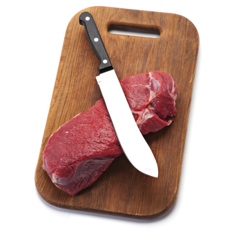
CFIA to Boost Beef Grading System
By Food in Canada staff
Regulation camera Canadian Cattlemen’s Association regulations

The Canadian Food Inspection Agency (CFIA) has approved the use of a digital imaging system for beef grading, made by Germany’s e+v Technology. The move is the first major advancement in the Canadian grading system since the computer vision system camera was introduced in 1999.
The announcement came through a recent Canadian Cattlemen’s Association (CCA) newsletter. “The CCA has long been an advocate of computer vision grading because of the potential for the machine to make numerous measurements in the very short period of time currently available to grade each carcass,” noted Mark Klassen, the association’s director of Technical Services. The CCA says new system will also allow for “improved grading accuracy under current grading regulations.”
Greater Accuracy
The e+v unit is designed for use with a moving rail, allowing it to photograph and analyze the rib eye area of the carcass between the 12th and 13th ribs as it passes by. The camera measures grade fat, and rib eye width and depth, and calculates a lean yield percentage, lean yield grade and marbling score. Graders can still overrule the camera’s grading.
While the technology is already in use in more than 20 U.S. packing plants, there are currently only three large federally inspected Canadian facilities with a moving rail to accommodate it – the Cargill plants in Guelph, Ont. and High River, Alta., and XL Beef’s Brooks, Alta. facility. All three have now installed the technology. Packing plants must also request to use the equipment for grading, the CFIA must approve installation, and the Canadian Beef Grading Agency must establish protocol.
Shared Information
Because the carcass information obtained by the e+v unit can be stored and shared, the CCA believes it will ultimately help boost the quality and yield of Canadian beef. Through the CCA-backed Beef InfoXchange System producers will be able to use the information for functions such as improving feedlot operations, making genetic improvements, or strengthening marketing efforts.
The CCA says the technology is “less feasible” for smaller plants without a moving rail, although it is looking at ways to incorporate the technology into a portable camera.
Print this page